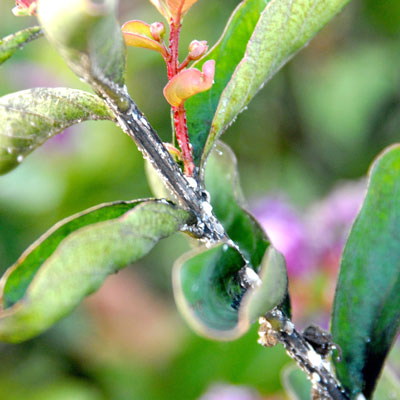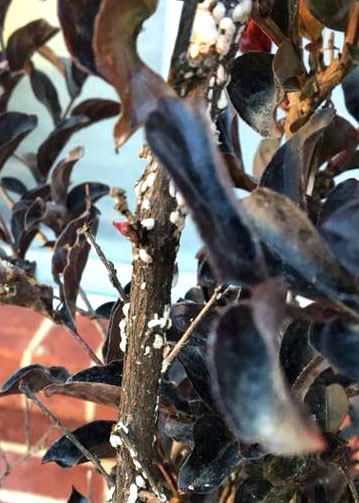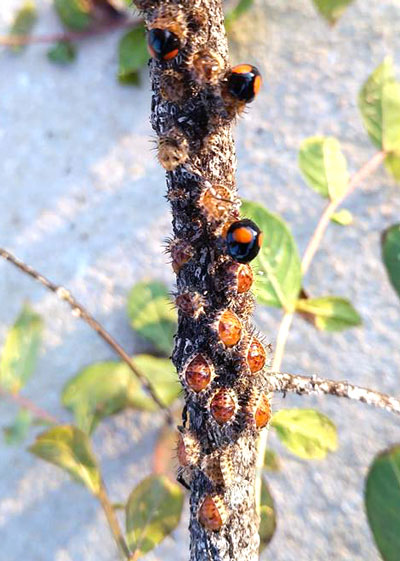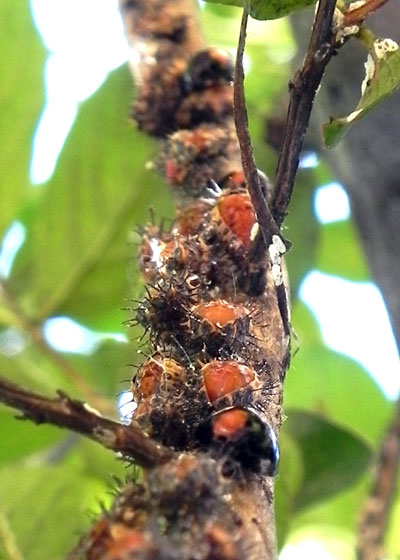Time Is Here to Treat Crape Myrtles
Crape myrtles have been the most popular summer-flowering shrubs in the South for the past 200 years. Sure, they’ve had a few issues with powdery mildew, but aphids and a new pest, crape myrtle bark scale, have moved ahead of them in line. Let me tell you about that last one.
Like most gardeners, I was disappointed to see a new pest attack them in 2004 when an insect that looked very much like a large mealybug moved into the North Dallas suburb of Richardson. We didn’t know what it was. As I found out, scale insects can be difficult even for veteran entomologists to identify with certainty.


It now appears that this species of scale was introduced to the U.S. from China. It is a known problem with their crape myrtles. Somehow it hitched a ride into the States.
My longtime friend Dr. Mike Merchant, entomologist (now retired) with the Texas AgriLife Extension of Texas A&M was brought into the picture very early and did a great deal of research on this pest. It has come to be known as crape myrtle bark scale.
(Note that some use a one-word spelling of “crapemyrtle.” Plant taxonomists will tell you that common names have few rules, so both one- and two-word spellings are acceptable.)
Here are a few of my own observations from The Crape Myrtle Trails of McKinney where we have thousands of crape myrtles growing side by side.
• Bark scale was worst in 2007, a very wet June. Notably, other scale insects were also bad on hollies, euonymus, and other scale-prone plants that year.
• By the end of that summer, a natural predator, the twice-stabbed ladybug had become fairly common. It showed to be very efficient in eliminating many of the scales.


• Summers since 2007 have seen varying populations of bark scale. Of course, if you had scale on your own crape myrtles in any year, that made it a bad year for you, but in general terms, most summers since 2007 have seen lesser outbreaks. That very well could be because populations of predators have built up. That’s not uncommon for new pests – that they are bad at the outset, then that they moderate in time. But we will find out.
• Initially the scale was seen only in Dallas and northward, also slightly to the east. People in Fort Worth and westward were essentially unaware of it for several years. Now it has spread completely across the South. Gardeners and nursery growers in those states are as alarmed as we here in Texas were the first summer that we saw it. We’ll get another chance to observe if natural predators reduce their populations as they may have done ours.
Best control is prevention…
and the time for prevention is NOW!
Here are your guidelines as suggested by university research scientists:
• Scrub the trunks with a soft brush or sponge and soapy water to remove loose tissues and as many scale insects as possible.
• Apply a drench of Imidacloprid mixed with several gallons of water in a bucket around the root system of the tree. Exact amount of water is not important, but you need to measure height of the crape myrtle and be precise in the amount of insecticide you include.
• This treatment should be done now. You want it ahead of bloom time.
• Sprays, including dormant oils, are not as effective on crape myrtle bark scale.
My own personal observation, having worked with thousands of crape myrtles in the past 20 years: This scale and the resulting black sooty mold that develops in its sticky honeydew residue are not especially threatening to crape myrtles. However, they are very unappealing visually, so this preventive treatment is highly recommended.
Note: Entomologists and beekeepers tell me that they now feel that bee colony collapse, once thought to be brought on by systemic insecticides, seems instead to be the result of a complex collection of factors. Nonetheless, this is why the recommendation is for a soil drench instead of a spray and that it be made weeks ahead of the main bloom time.
